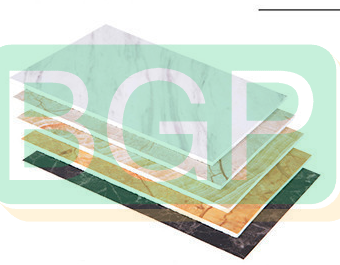Jul. 13, 2023
Construction & Real Estate
Are you tired of dealing with nails and hammers when working on your DIY projects? If so, you've come to the right place! In this comprehensive guide, we will introduce you to the wonders of nail-free adhesive and show you how to use it effectively for your DIY projects. Say goodbye to hammering and hello to hassle-free construction!
Nail-free adhesive, also known as construction adhesive or construction glue, is a versatile bonding material used in various construction and DIY applications. It is designed to provide a strong and durable bond between different materials, eliminating the need for nails, screws, or other traditional fasteners.

Using nail-free adhesive for your DIY projects comes with numerous benefits. Let's explore some of the advantages that make it a popular choice among DIY enthusiasts:
Nail-free adhesive offers a hassle-free alternative to traditional fastening methods. With its simple application process, you can quickly bond materials together without the need for additional tools. This not only saves you time but also reduces the risk of accidental injuries associated with hammering or drilling.
By eliminating the need for nails or screws, nail-free adhesive provides a cleaner and more visually appealing finish to your projects. You won't have to worry about unsightly nail heads or visible fasteners, allowing your craftsmanship to shine through without any distractions.
When used correctly, nail-free adhesive creates a powerful bond that can withstand significant stress and load. This makes it suitable for a wide range of applications, from securing baseboards and crown moldings to bonding wall panels and installing countertops.
One of the key advantages of nail-free adhesive is its versatility. It can be used on various materials, including wood, metal, plastic, ceramic, and more. This makes it an excellent choice for a diverse range of DIY projects, whether you're working on furniture, home decor, or even outdoor constructions.
To ensure optimal results and a strong bond, follow these step-by-step instructions on how to use Free nail glue for your DIY projects:
Before applying the adhesive, ensure that the surfaces you plan to bond are clean, dry, and free from any dust, grease, or debris. This will help the adhesive adhere better and create a stronger bond.
Using a utility knife, cut the applicator nozzle of the adhesive at a 45-degree angle. The size of the nozzle opening will depend on the size of the project and the amount of adhesive needed.
Squeeze the adhesive onto one of the surfaces in a zigzag pattern or a series of dots. Avoid applying too much adhesive, as it may lead to excessive squeezing out when the surfaces are joined.
Press the two surfaces firmly together, ensuring proper alignment. Apply pressure for a few seconds to allow the adhesive to set. Depending on the adhesive's instructions, you may need to support the bond with clamps or tape until it fully cures.
Using a damp cloth or sponge, carefully clean up any excess adhesive that may have squeezed out during the bonding process. It's essential to remove it while it's still wet to avoid leaving visible residue.
Now that you have a thorough understanding of how to use nail-free adhesive for your DIY projects, you can embark on new construction ventures with confidence. Enjoy the convenience, reliability, and aesthetic appeal that nail-free adhesive brings to your creations!
Previous: What is the purpose of dams and their role in water management?
Next: How to Cut Culvert Pipe
If you are interested in sending in a Guest Blogger Submission,welcome to write for us!
All Comments ( 0 )